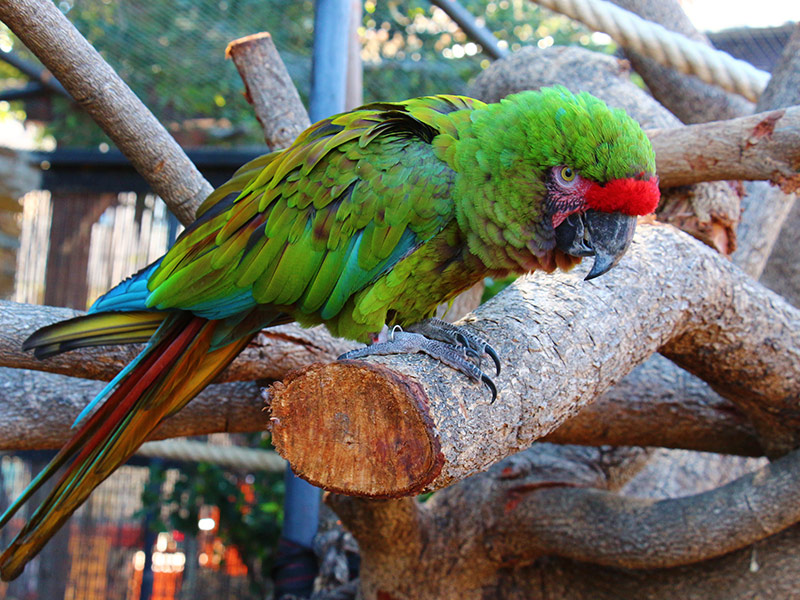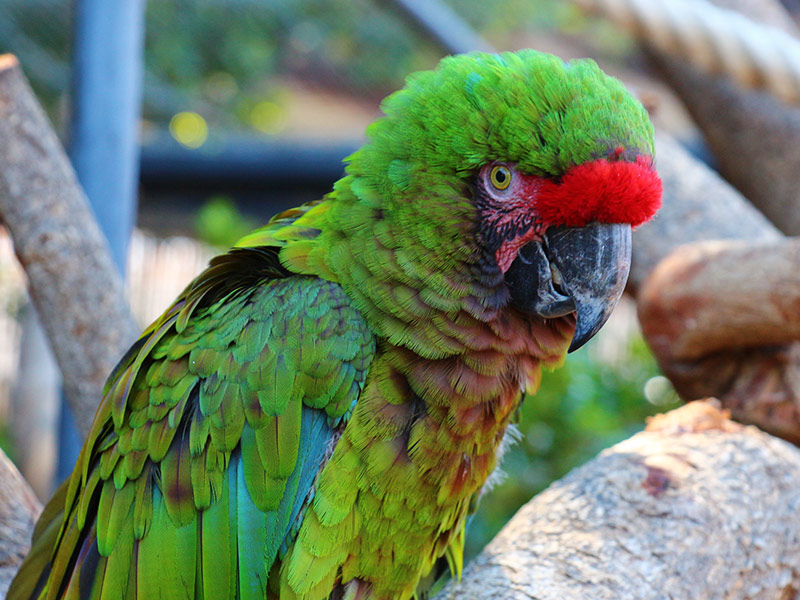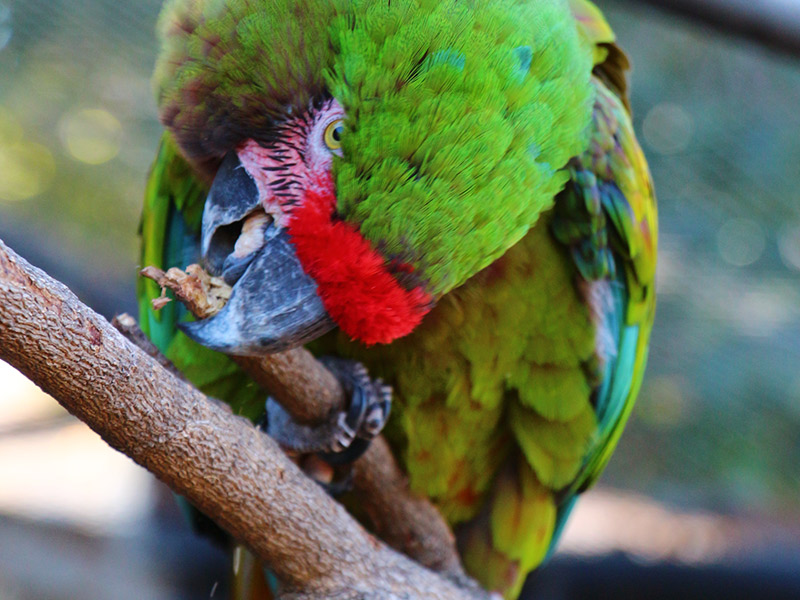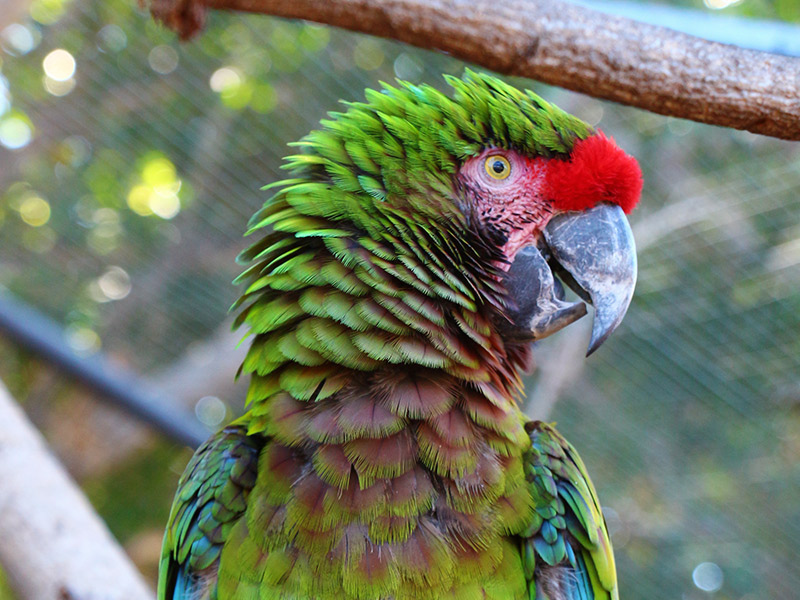Found from Mexico all the way to northern Argentina.
There is no sexual dimorphism, both female and male are the same.
Has highly developed senses of taste, smell, sight and hearing. They use sight to find food and detect predators, hearing helps them communicate and defend their territory, taste is important for food selection and smell helps them choose a mate and detect food.
They are very social birds and can live in groups of up to 50 or even 100, although they usually fly and feed in pairs.
Military macaws are monogamous and stay with one mate for life. They nest in existing tree hollows. They generally reproduce every 1 to 2 years and lay an average of 2 to 3 eggs per clutch. In the period prior to fertilisation, the males protect and feed the females. During the period leading up to hatching, both sexes provide for and protect the eggs. The males continue to protect and feed the females while they are incubating the eggs.
Military macaws are primarily granivorous, meaning that they mainly eat seeds, which is what makes them great seed dispersers for a variety of plants.
Major threats include habitat destruction and fragmentation, as well as the illegal pet trade.





















